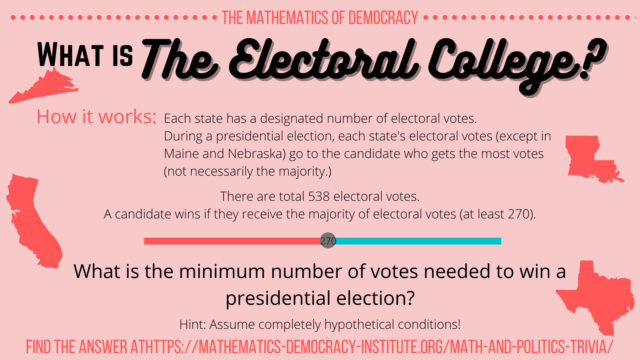A Comprehensive Guide to Understanding the Electoral College
The Electoral College system of the United States, often a topic of intense discussion and debate, was established by the Constitution. Its purpose was to create a balance between populous and less populous states in the election of the President. This guide aims to provide a thorough understanding of the Electoral College, its history, functioning, and implications.
Historical Background
The Electoral College was designed by the framers of the Constitution in 1787. It was intended to serve as a compromise between election of the President by Congress and election by popular vote. Concerns were held regarding the direct election of the President by the general population due to the potential influence of populous states over less populous ones. Hence, a system was crafted to ensure a more balanced representation.
Structure and Composition
The Electoral College consists of 538 electors, corresponding to the 435 Representatives and 100 Senators, plus three electors from the District of Columbia. Each state’s number of electors equals its total number of Senators and Representatives in Congress. Therefore, smaller states are given a proportionally larger influence relative to their population compared to larger states.
Election Process
The process begins with the general election in November, where voters cast their ballots for a slate of electors chosen by their party. These electors are pledged to vote for their party’s candidate. The winning slate of electors in each state then convenes in December to cast their votes for President and Vice President. A majority of 270 electoral votes out of 538 is required to win the presidency.
The Role of States
Most states use a “winner-takes-all” system, where the candidate who receives the most votes in that state wins all of its electoral votes. However, Maine and Nebraska employ a proportional system, allocating two electoral votes to the state-wide winner and one electoral vote to the winner of each congressional district.
Contingencies and Exceptions
If no candidate receives a majority of the electoral votes, the election is decided by the House of Representatives, with each state delegation having one vote. This situation has occurred only once in history, in the election of 1824.
Faithless electors, those who do not vote for the candidate to whom they are pledged, have been a rare occurrence. Although their impact on election outcomes has been minimal, some states have laws to penalize or replace faithless electors.
Criticisms and Controversies
The Electoral College has faced criticism for various reasons. One major criticism is the possibility of a candidate winning the presidency without winning the popular vote, which has occurred five times in history, most recently in 2016. Critics argue that this undermines democratic principles and diminishes the value of individual votes.
Another criticism is the overrepresentation of smaller states due to the minimum allocation of three electoral votes regardless of population. This can lead to disproportionate influence by less populous states on the election outcome.
Moreover, the focus on swing states, or battleground states, where the outcome is uncertain, leads to disproportionate attention and resources being directed towards these states. As a result, issues pertinent to non-swing states may be overlooked.
Proposals for Reform
Several reforms have been proposed to address these criticisms. The most notable among them is the National Popular Vote Interstate Compact (NPVIC), an agreement among states to award their electoral votes to the candidate who wins the national popular vote, regardless of the state-level outcome. This compact will take effect only when it is adopted by states totaling at least 270 electoral votes.
Another proposal is to adopt a proportional allocation of electoral votes, similar to the systems used in Maine and Nebraska. This would ensure a more equitable reflection of the popular vote within each state.
Conclusion
The Electoral College is a fundamental yet controversial component of the American political system. Understanding its origins, mechanics, and the debates surrounding it is essential for comprehending its role in presidential elections. While the system has its defenders, who argue that it provides stability and balances interests between states, ongoing discussions about its reform or replacement reflect a desire to ensure that the democratic process evolves in a way that accurately represents the will of the American people. Through continued examination and dialogue, the most suitable method for electing the President of the United States will be sought.










